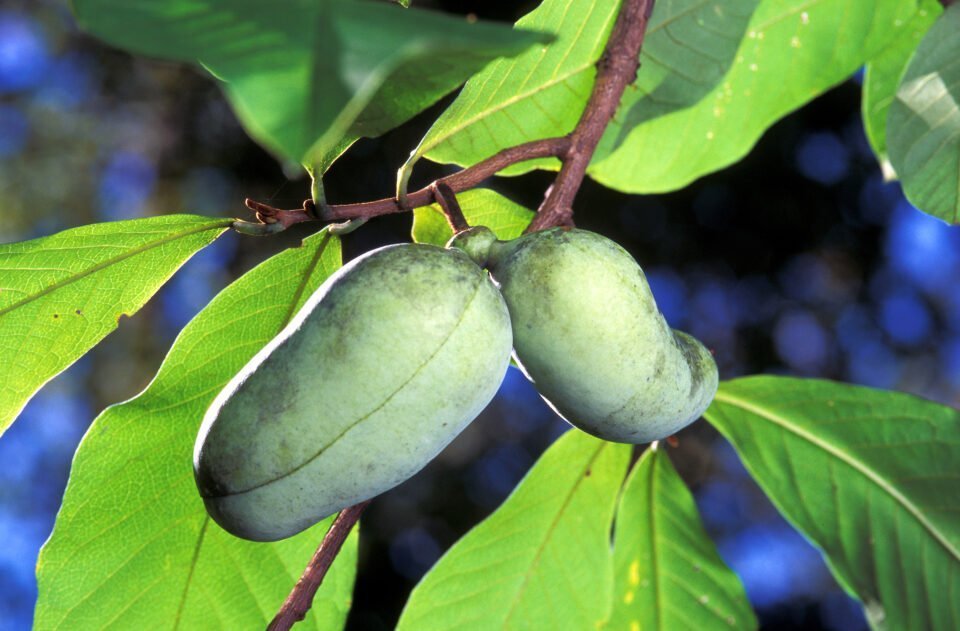Banana tree, paw paw… This is what asimina is called, the fruits of which look similar to papaya.
Amateur growers call asimina a tasty dietary product and say it has significant medicinal properties.
EastFruit journalists studied the culture, the demand for which has not yet been formed in the global market. To know how promising asimina is for commercial cultivation, which market segments are interested in it and the peculiarities of growing it in Ukraine read our material.
Asimina is almost unaffected by pests
Asimina is originally from North America. It was cultivated there over 100 years ago. Over time, the cultivation started in Spain, Italy, Portugal, France, Japan and other countries. This explains the wide choice of seedlings from the USA, Italy and Spain on the Eastern European market.
Today, there are about 70 varieties of asimina, differing in the degree of cold resistance, ripening time, seed size. Among the most popular of them are the varieties by US breeders: Lehman’s Delight, Jerry’s Big Girl, Maria’s Joy, Shenandoah, Summer Delight, Kentucky Champion, Al Hor.
The plant is thermophilic and is used to subtropical latitudes, while it can also withstand a short-term drop in temperature to – 30 – 35 ° С. This explains the fact that in recent years asimina, in connection with global climate changes, began to be grown in Ukraine and even in the central zone of Russia.
Asimina is a cross-pollinated plant that blooms for 3 weeks (April – May). A characteristic feature of flowers is a specific sour smell that attracts insects for pollination.
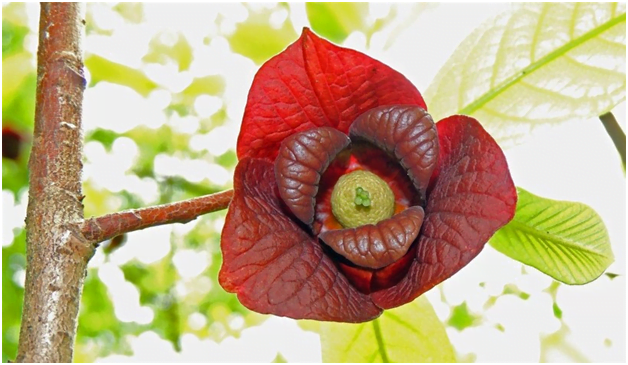
As farmers note, asimina has a significant advantage over many fruit and berry trees – it is almost not exposed to diseases and pests. Asimina produced the first fruits 3 to 4 years after planting the seedling and 5 to 6 years later when grown from seeds. The fruits ripen unevenly, and when ripe, they easily break off and fall to the ground. This usually happens in September – October and the harvest lasts about a month.
Before starting the cultivation of asimina, it is worth considering that it prefers slightly acidic or neutral, fertile, well-aerated soils without stagnant moisture. It can also grow on denser soils, if equipped with a drainage layer of sand and gravel at the bottom of the planting pit before planting.
Regular nutrition of asimina with complex mineral fertilizers (in summer – weekly), together with timely watering, contribute to the better formation and growth of the tree. At the same time, closer to the harvest season – by autumn, watering is reduced, and nutrition is stopped so that the wood can get stronger before cold weather starts.
It is better to choose a plot for planting in a warm, sheltered place from the winds. Young asimina seedlings (up to 3 years) are very sensitive to direct sunlight and can suffer from intense exposure, but feel very comfortable in the shade. In mature trees, sufficient lighting will affect yield levels. Plants in the shade are characterized by low fruit production.
How much should you invest in seedlings?
In Ukraine, plant seedlings are offered mainly on the websites of trading platforms for small horticultural farms at prices ranging from 300 to 1800 UAH ($ 11.25-64.47). The price range in nurseries depends on the variety and on whether the plant is grafted or not. Planting material is sold at about the same price on Russian online trading platforms for farmers.
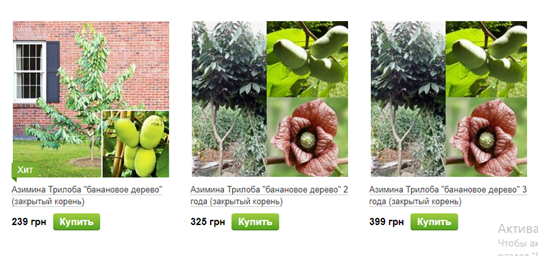
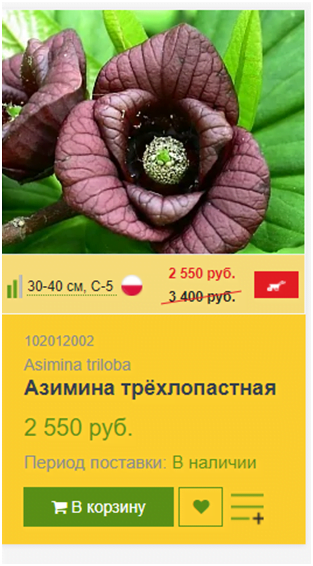
“Asimina is a cross-pollinated culture. There are self-pollinating varieties, but berries are small, and the overall yield is small in comparison with cross-pollination. With poor-quality pollination, berries crumble or are formed incorrectly. “ says Ukrainian grower Vasyl Mykytas.
The best option is to buy a ready grafted seedling. Their price is quite high and therefore you can buy 1–2-year-old seedlings and plant a good variety in 2-3 years.
“Besides, you can buy seeds and try to grow a seedling out of them yourself. Thus, you will save money,” says farmer Volodymyr Lesiv.
“In order to accelerate the first (signal) fruiting of asimina seedling, it is advisable to cut off the stem at the beginning of sap flow in spring and graft onto another seedling. The grafted branches form a flower bud much earlier; fruiting in no way affects the rootstock. But the farmer will have a clear idea of the seedling’s potential,” Vasyl Mykytas advises.
Asimina is widely used in cooking, medicine and cosmetology.
Asimina has good medicinal properties. Plant grains contain alkaloids, so tinctures from them are used as a remedy for poisoning.
The fruits are very rich in fructose and sucrose, amino acids, vitamins (especially A and C), potassium, calcium, phosphorus, iron, magnesium. Their regular use helps to remove toxins from the body, restores the gastrointestinal tract and has a rejuvenating effect.
In pharmaceuticals, asimina preparations are well known as agents with anti-inflammatory and antitumor effects. Its extracts are used to improve the immune system, increase the protective properties and reduce the effects of stress, eliminate nervous disorders, psychosis. Good cosmetic properties of the fruit are also known.
Asimina can also be a dish. To do this, peel off the skin with a knife and remove the seeds.
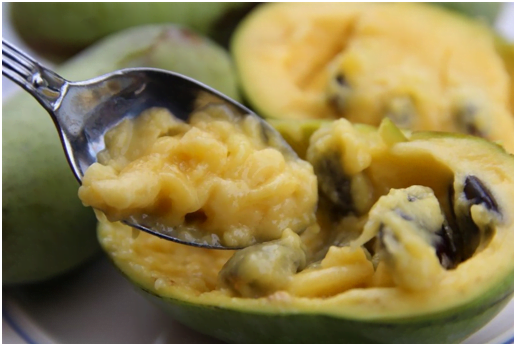
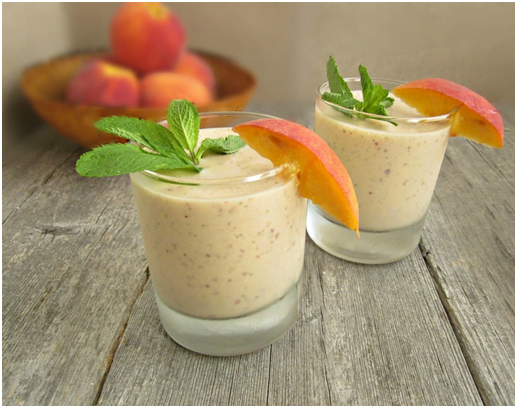
The flesh of asimina goes well with berries, fruits, meat, nuts. With yoghurt, it is perfect for a diet breakfast. In addition, asimina is used to make smoothies, cocktails, desserts, pastries, ice cream, sauces, creams and jams.
At the same time, we note that the asimina market does not yet exist due to its rarity in the world – mainly amateur farmers cultivate it. Even in the United States, asimina has not yet become a widespread commercial crop. Nevertheless, over the past 15-20 years, significant efforts have been made in the USA, Italy and Australia to study and create collections of the gene pool of this plant.
This allows us to assume that the cultivation of asimina can be a promising niche for farmers, subject to the correct selection of varieties, adherence to the cultivation technology, as well as competent marketing promotion at the market. Today, asimina is a hobby culture, for which there is a demand on trading platforms and in the communities of amateur farmers, which allows to sell asimina fruits in Ukraine at 1000 UAH/kg ($ 37.49).
The use of the site materials is free if there is a direct and open for search engines hyperlink to a specific publication of the East-Fruit.com website.




